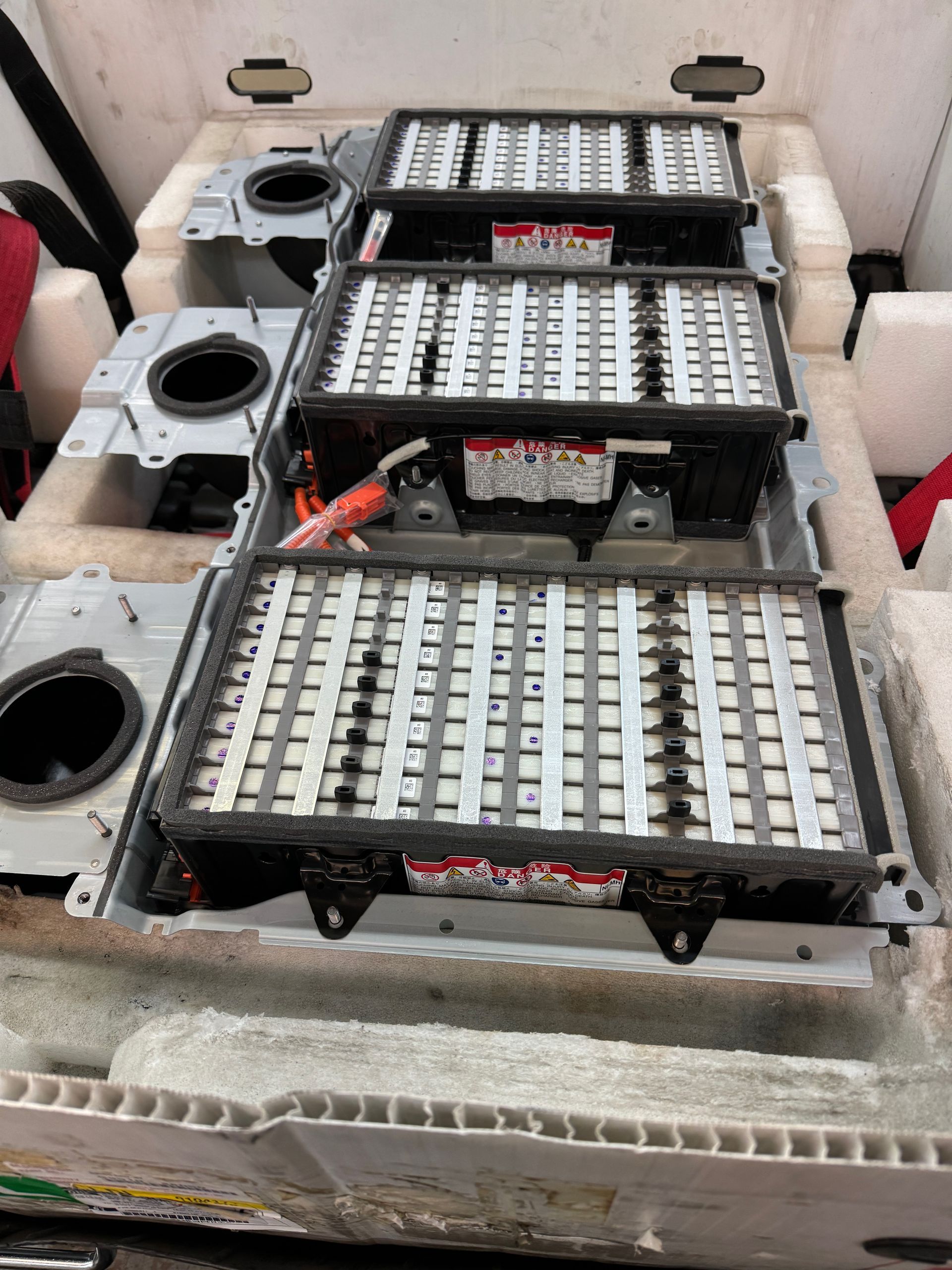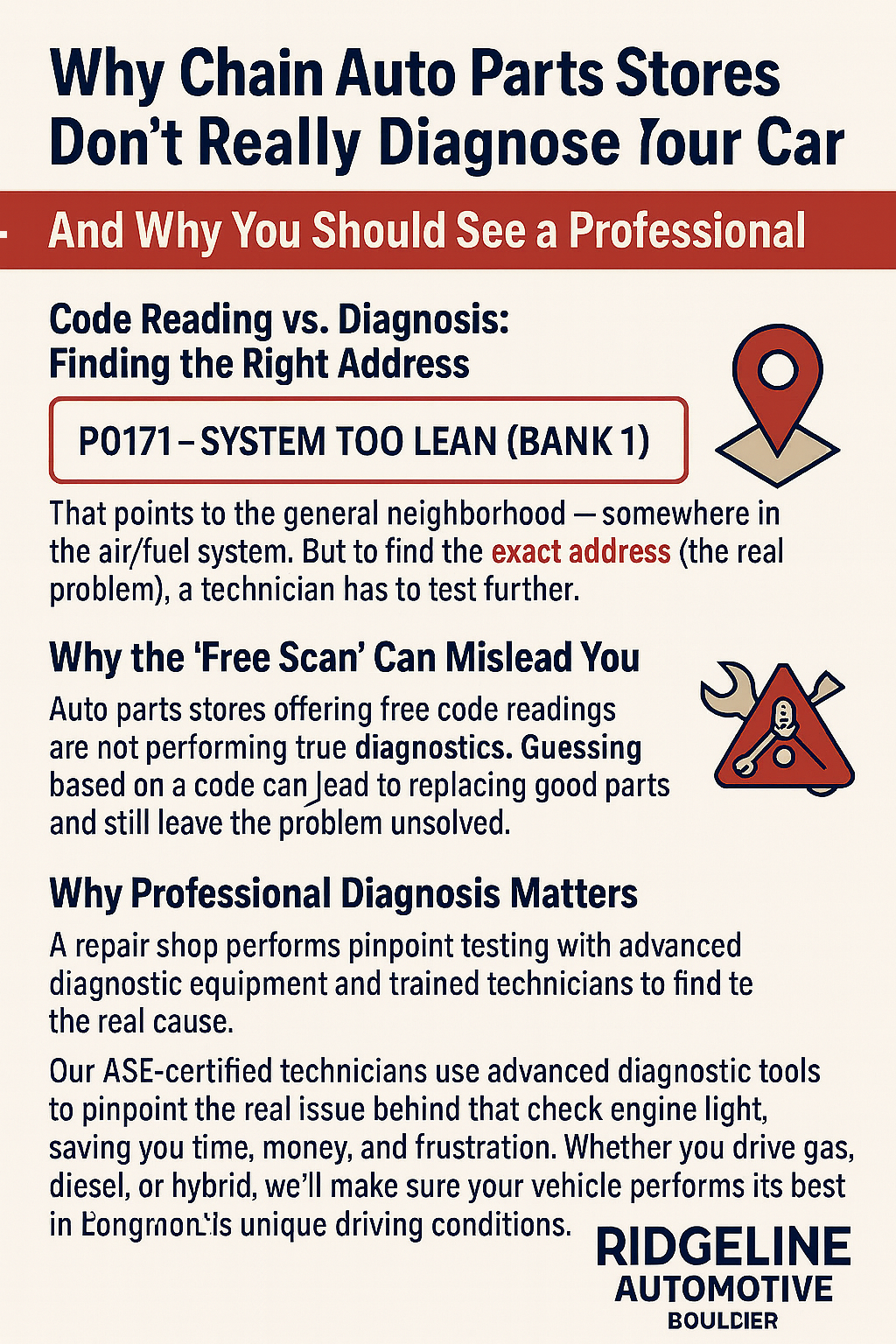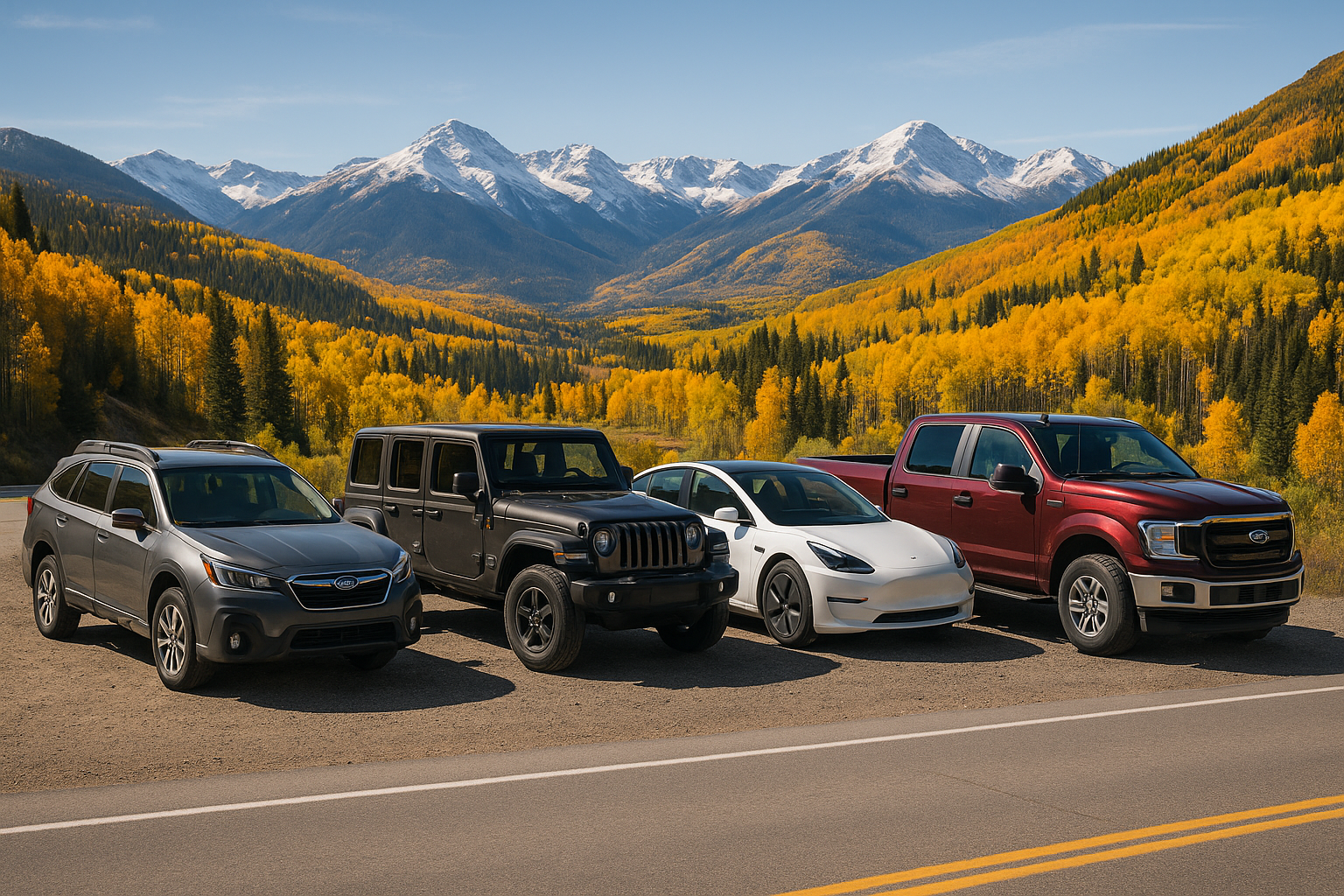Why Does Your Tire Pressure Light Come On When the Weather Gets Colder?
As Colorado drivers, we all know the drill: the first cold snap hits, you hop in your car, and ding!—your tire pressure warning light pops on. But don’t panic—this is one of the most common and least serious warning lights you’ll see this time of year. So why does this happen, and what should you do about it?
Let’s break it down.
❄️ Cold Weather & Tire Pressure: What’s the Connection?
When the temperature drops, so does your tire pressure. It’s not that your tires are leaking—it’s just physics. Air contracts when it’s cold, and that means the air inside your tires takes up less space.
Here’s a quick rule of thumb:
For every 10°F drop in temperature, your tires can lose about 1 PSI (pound per square inch) of pressure.
So, if you aired up your tires on a sunny 70°F day, and overnight it dropped to 30°F, you could easily lose 4 PSI just from the cold. That’s often enough to trigger the TPMS (Tire Pressure Monitoring System) warning light.
🚨 What Happens If You Ignore It?
Driving with underinflated tires can lead to:
- Poor fuel economy – your car has to work harder to move.
- Uneven tire wear – which shortens the life of your tires.
- Reduced traction – especially dangerous on icy or snowy roads.
- Possible tire failure – in extreme cases, low pressure can cause overheating and a blowout.
✅ What You Should Do When the Light Comes On
- Check your tire pressure.
- Use a good-quality tire pressure gauge when your tires are cold (ideally before you’ve driven more than a mile).
- Compare it to the recommended PSI.
- This info is usually on a sticker inside your driver’s side door or in your owner’s manual. Don’t go by the PSI printed on the tire—that’s the maximum, not the recommended.
- Add air if needed.
- Most gas stations and tire shops in Colorado have air stations. Many newer ones even let you preset the PSI and beep when you’ve hit it.
- Reset the TPMS if needed.
- Some systems reset automatically after you drive a bit with proper pressure. Others may need a manual reset—check your manual or ask your mechanic.
🔁 A Seasonal Routine
It’s a good idea to check your tire pressure every month, but especially in fall and spring, when Colorado temperatures swing wildly. Making this a habit can save you money on gas, tires, and even prevent a roadside breakdown.
And if your light stays on after you’ve topped off your tires, or it keeps coming back, there could be a leak or sensor issue—time to visit a trusted shop.
🏔️ Colorado-Specific Tip
In the mountains, temperatures can change quickly even over short distances. If you live or drive up in higher elevations like Breckenridge or Estes Park, your tires are going to feel the cold even more. It’s smart to keep a tire gauge and a small air compressor in your trunk just in case.
Final Thoughts
That tire pressure light is your car’s way of saying, “Hey, the weather’s changing—don’t forget about your tires.” A quick check now can save you a ton of trouble later. Stay safe out there, Colorado!
Need help checking your tire pressure or resetting that warning light? Stop by your local tire or auto shop—many offer this service for free or as part of a routine check.




